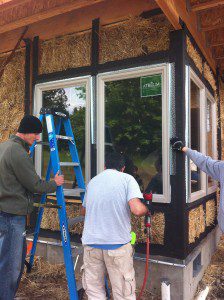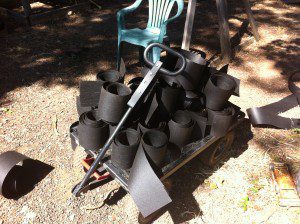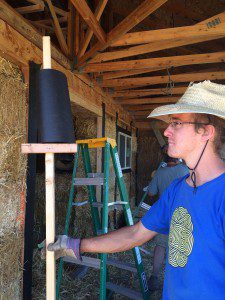
A second reason for the roofing felt is to provide protection from vapor intrusion along the wood. Because the plaster will absorb moisture from the climate and then release it in time, you want to isolate the plaster from the wood so that the wood does not, in turn, absorb moisture from the plaster and drive it deeper into the wall than the plaster can retrieve it from.






6 Responses
Thank you Andrew for the great work you are doing . My question is where are you sourcing your bales for Ashland, Oregon projects?
Gratefully,
Robert Laporte
541-488-9508
Hi Robert. Nice to hear from you and thank you for your kind words. I appreciate the great work you (and Paula) do as well. I recommend Dick Niedermeyer on Hanley Road in Central Point. I don’t have his contact information on me right now, but he has been great to me over the years. His son may be running things now, I’m not sure. They are both very kind men with quality straw.
This may be a dumb question. I just read your articles about counter flashing windows. Wouldn’t stapling the felt and wire mesh around the windows puncture the flashing?
Not a stupid question at all. Yes it does puncture the membrane; however, it is a self healing material that seals the penetrations. Not your grandfather’s flashing material. 🙂
Dear Andrew it is possible to use any other type of felt ? Or any other product to do this?…..im asking here in uruguay about it but here just have the bitumen felt for roof
Thank you for your time
Absolutely. The key is to use a material that will provide a break between the wood and the plaster. The material should be waterproof, but other than that, there are few restrictions on what you use.